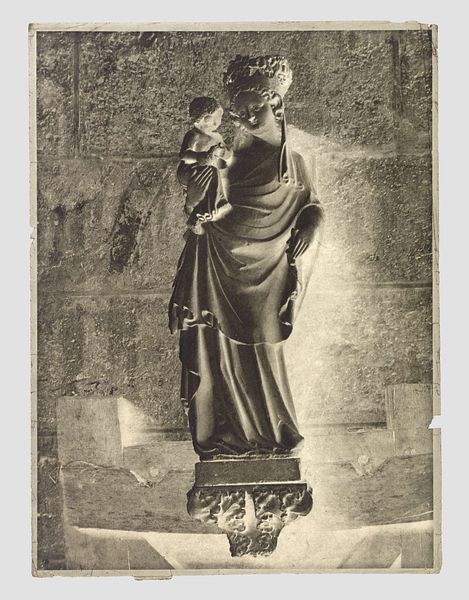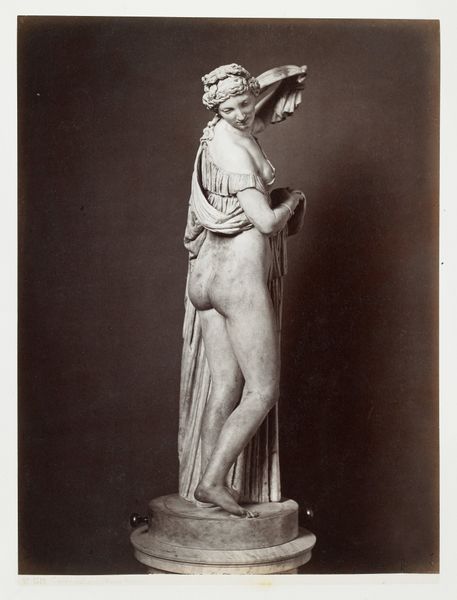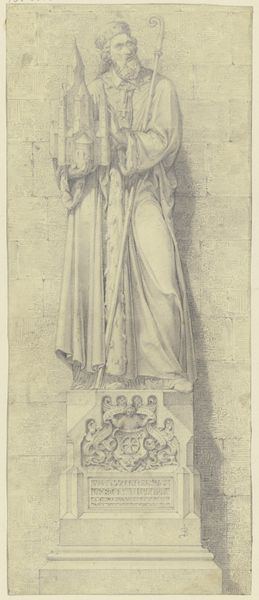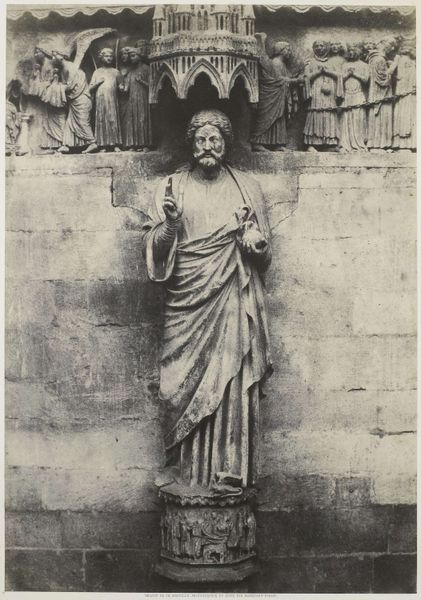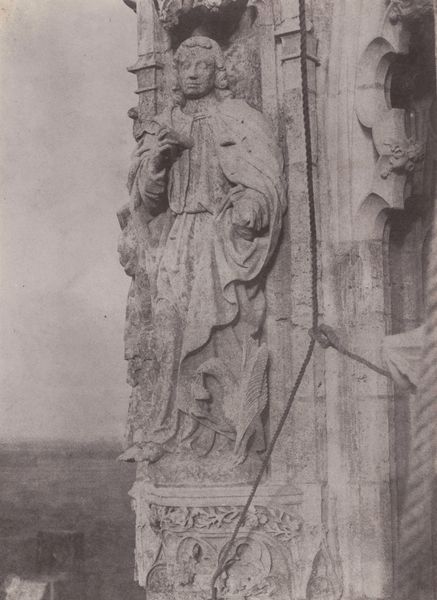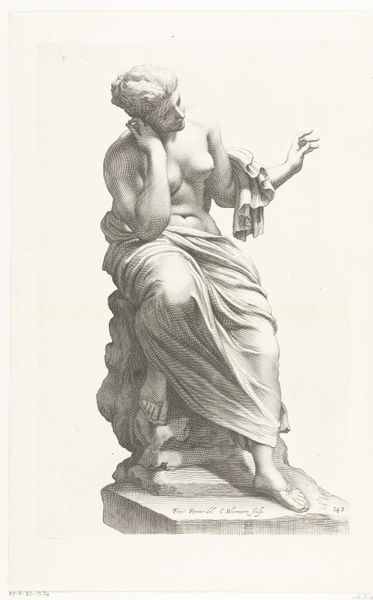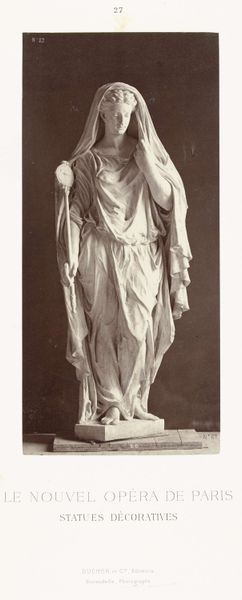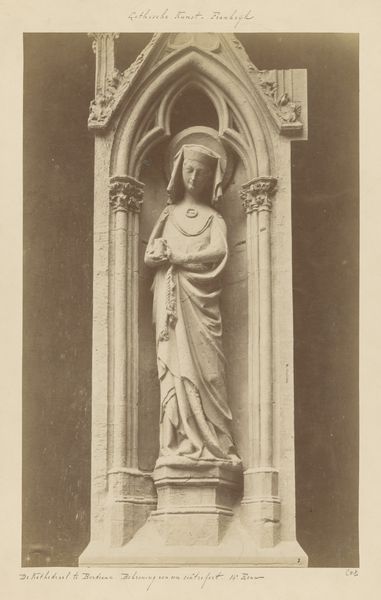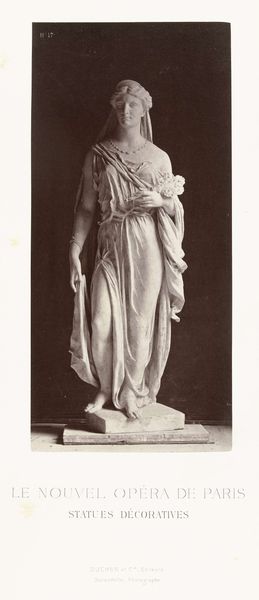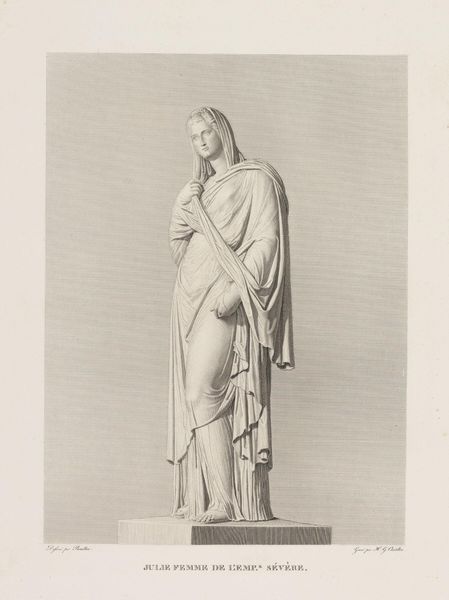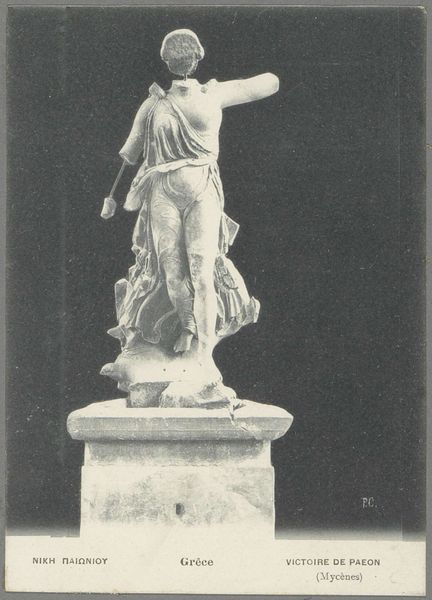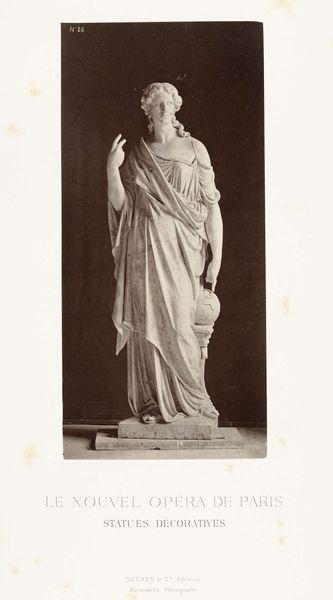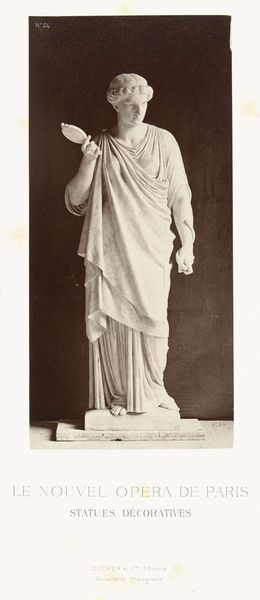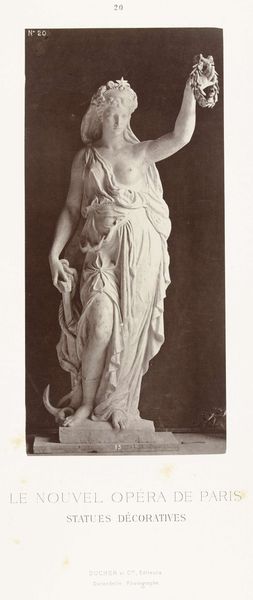
photography, sculpture, gelatin-silver-print
#
portrait
#
16_19th-century
#
archive photography
#
photography
#
historical photography
#
sculpture
#
gelatin-silver-print
#
19th century
#
history-painting
#
academic-art
Dimensions: height 323 mm, width 235 mm
Copyright: Rijks Museum: Open Domain
This photograph of a sculpture of Mary and child at Notre Dame in Paris was made by Charles Nègre, though we don't know exactly when. It's a direct positive print on paper. In the mid-19th century, photography wasn't just about capturing an image; it was deeply intertwined with the science and labor required to produce the final print. Nègre’s choice of the direct positive method, rather than a negative, meant that each print was unique and unrepeatable. The tones and textures visible here are influenced by the materials used to make the print, giving a unique aesthetic quality. This process was labor-intensive, requiring careful management of chemicals and precise timing during exposure. The result is not just a representation of the sculpture, but a physical artifact embedding both Nègre’s artistic vision and the chemistry of photography. The image gives us a glimpse into the technologies that would soon transform artistic practice.
Comments
No comments
Be the first to comment and join the conversation on the ultimate creative platform.
